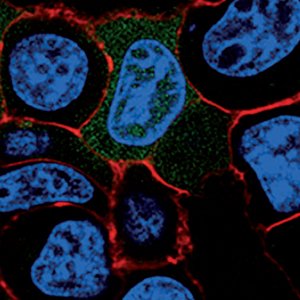Oct 30 2014
Members of ICN2 Nanostructures Functional Materials Group published a series of works developing robust nanoparticles based on coordination polymers for application on theranostics (therapy + diagnosis). They opened a wide variety of possibilities into high added-value medical applications.

ICN2 Nanostructures Functional Materials (Nanosfun)Groupdevelops robust nanoparticles based on coordination polymers for application on nanomedicine. A method to systematically control the surface functionality of Coordination Polymer Particles (CPPs) or to master their modification at the nanoscale has been reported and opened a wide variety of possibilities into high added-value medical applications. (1) This is especially relevant for drug delivery applications, diagnosis and/or recognition chemicals that allow for an enhanced biological activity, imaging, or stability.
Thus, the members of Nanosfun have envisioned the use of ligands bearing a reactive group that enables reproducible low-cost fabrication of nanoscale platforms and their post-synthetic modification. Moreover, the successful cytotoxicity of the new CPP nanoparticles loaded with antitumoral agents represents notable evidence of the potential utility of these CPPs as chemotherapeutic nanomedicines with high uptake and in vitro activity under low dosing regimen.
The different studies detail mechanistic investigation of the different guest release mechanisms that can take place on CPPs (diffusion, CPP degradation via surface erosion and undesired desorption from the particle surface). (2) The use of the coordination polymers sensitive to the environment or external stimuli developed within the group has allowed to design nanoplatforms with different release profiles in a switchable manner and controlled by the application of an external stimuli or as consequence of changes in the environment. (3)
These materials placed between pure organic polymeric nanoparticles and the metal nanoparticles intended to take advantage of the metal ion properties and their capacity of encapsulation to build multifunctional nanoplatforms with application on theranostics (therapy + diagnosis).
The ICN2 Nanosfun has developed this strategy, published recently in three articles with authors from ICN2, including the CSIC Professor and Group LeaderDr.Daniel Ruiz, Dr.Fernando Novio, Dr.FabianaNador or the PhD student Karolina Wnuk, and co-authors from the UAB. ICN2 researchers' work with these materials has resulted recently in the publication of three scientific papers in Chemistry - A European Journal(1-2) and Chemistry Communications(3) and a National Patent. (4)
Publications:
1.F. Novio, J. Lorenzo, F. Nador, K. Wnuk, D. Ruiz-Molina Chem. Eur.J. 2014, 20, 1 – 9.
http://onlinelibrary.wiley.com/doi/10.1002/chem.201403441/abstract
2.L. Amorín-Ferré, F. Busqué, J. L. Bourdelande, D. Ruiz-Molina, J.Hernando, F. Novio. Encapsulation and Release Mechanisms in Coordination PolymerNanoparticles.Chem. Eur. J. 2013, 19, 17508 – 17516.DOI: 10.1002/chem.201302662
http://onlinelibrary.wiley.com/doi/10.1002/chem.201302662/abstract
3. F. Nador, F. Novio, D. Ruiz-Molina. Chem. Commun., 2014, DOI:10.1039/C4CC05299D.
http://pubs.rsc.org/en/content/articlelanding/2014/cc/c4cc05299d#!divAbstract
Patent:
4. Sistema poliméricometaloorgánico de coordinaciónaescala micro-/nanométrica, procedimiento de obtención y aplicaciones. Pat. Appl. P201331869